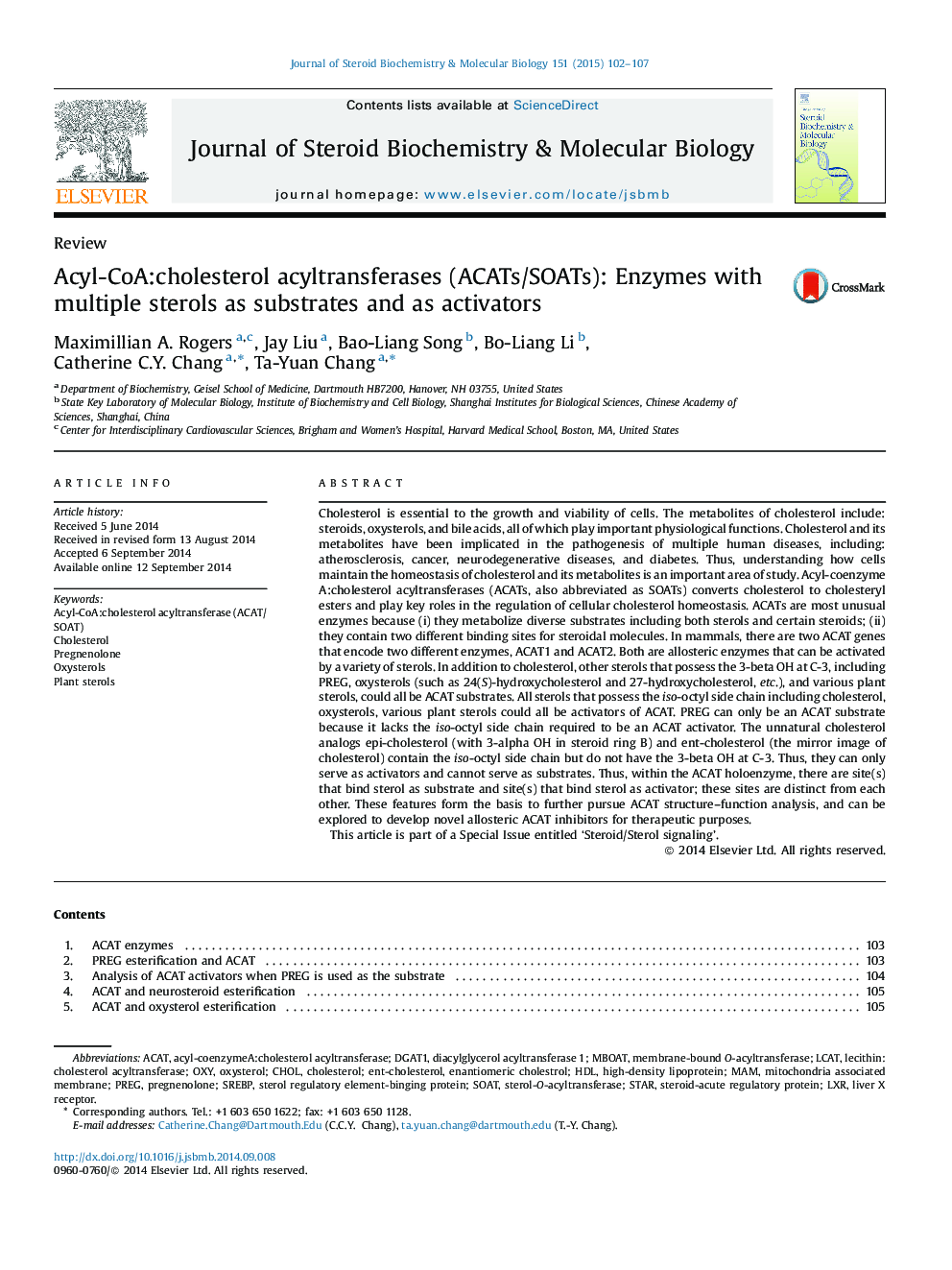| کد مقاله | کد نشریه | سال انتشار | مقاله انگلیسی | نسخه تمام متن |
|---|---|---|---|---|
| 1991421 | 1540998 | 2015 | 6 صفحه PDF | دانلود رایگان |

• ACATs esterify both sterols and certain steroids including pregnenolonone.
• ACATs contain two different steroidal binding sites.
• ACATs are drug targets to treat several human diseases.
• The novelty of ACAT enzymology can be exploited to develop allosteric ACAT inhibitors.
Cholesterol is essential to the growth and viability of cells. The metabolites of cholesterol include: steroids, oxysterols, and bile acids, all of which play important physiological functions. Cholesterol and its metabolites have been implicated in the pathogenesis of multiple human diseases, including: atherosclerosis, cancer, neurodegenerative diseases, and diabetes. Thus, understanding how cells maintain the homeostasis of cholesterol and its metabolites is an important area of study. Acyl-coenzyme A:cholesterol acyltransferases (ACATs, also abbreviated as SOATs) converts cholesterol to cholesteryl esters and play key roles in the regulation of cellular cholesterol homeostasis. ACATs are most unusual enzymes because (i) they metabolize diverse substrates including both sterols and certain steroids; (ii) they contain two different binding sites for steroidal molecules. In mammals, there are two ACAT genes that encode two different enzymes, ACAT1 and ACAT2. Both are allosteric enzymes that can be activated by a variety of sterols. In addition to cholesterol, other sterols that possess the 3-beta OH at C-3, including PREG, oxysterols (such as 24(S)-hydroxycholesterol and 27-hydroxycholesterol, etc.), and various plant sterols, could all be ACAT substrates. All sterols that possess the iso-octyl side chain including cholesterol, oxysterols, various plant sterols could all be activators of ACAT. PREG can only be an ACAT substrate because it lacks the iso-octyl side chain required to be an ACAT activator. The unnatural cholesterol analogs epi-cholesterol (with 3-alpha OH in steroid ring B) and ent-cholesterol (the mirror image of cholesterol) contain the iso-octyl side chain but do not have the 3-beta OH at C-3. Thus, they can only serve as activators and cannot serve as substrates. Thus, within the ACAT holoenzyme, there are site(s) that bind sterol as substrate and site(s) that bind sterol as activator; these sites are distinct from each other. These features form the basis to further pursue ACAT structure–function analysis, and can be explored to develop novel allosteric ACAT inhibitors for therapeutic purposes.This article is part of a Special Issue entitled ‘Steroid/Sterol signaling’.
Journal: The Journal of Steroid Biochemistry and Molecular Biology - Volume 151, July 2015, Pages 102–107